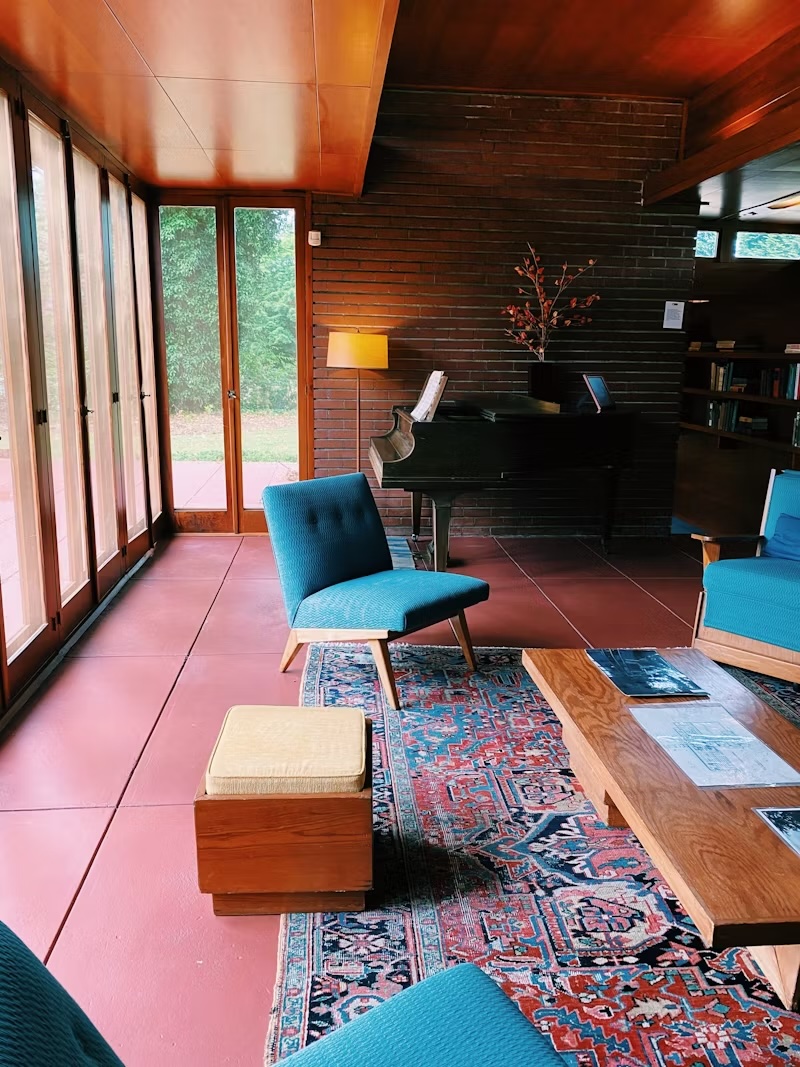Imagine stepping into a world where design transcends mere functionality, weaving stories, moods, and atmospheres into the fabric of everyday life. This is the essence of mid-century modern design, a movement that, though born in the mid-20th century, continues to enchant and inspire. Today, we embark on a journey through time to explore the icons of this movement, their legendary creations, and the indelible mark they’ve left on the world of design.
The Pioneers of Mid-Century Modern Design
Mid-century modern design, flourishing from the mid-1940s to the late 1960s, is celebrated for its clean lines, organic forms, and seamless integration of function and style. Born out of a desire to bring modernism into the post-war American home, it featured innovations in materials and technology. Among the vanguard were Charles and Ray Eames, Eero Saarinen, and George Nelson, whose visions shaped the future of design.
Charles and Ray Eames – The Dynamic Duo
Charles and Ray Eames were not just designers but visionaries who blurred the lines between art and science. Their Eames Lounge Chair, a symphony of leather and plywood, remains a hallmark of modern comfort and luxury. The Eames House, part of their Case Study House program, stands as a testament to modular design and prefabrication, illustrating their belief in the “best for the most for the least.”
Eero Saarinen – Sculpting Space
Eero Saarinen, known for his futuristic architecture and furniture, sculpted spaces and forms that were ahead of their time. The TWA Flight Center, with its swooping concrete forms, and the Gateway Arch, a monument to westward expansion, showcase his ability to blend functionality with dramatic, sculptural lines. His Tulip Table and Womb Chair continue to captivate with their organic shapes and innovative construction.
George Nelson – Design as a Way of Life
As Herman Miller’s director of design, George Nelson shaped the course of modern furniture. The Ball Clock and Marshmallow Sofa reflect his playful approach to design, marrying form and function with a whimsical twist. Nelson’s belief in design as an integral part of everyday life guided his creations, making modernism accessible to the American public.
The Unsung Heroes
Beyond these giants stood figures like Verner Panton and Florence Knoll, whose contributions, though less celebrated, were equally influential. Panton’s eponymous chair and Knoll’s knack for creating spaces that were both functional and beautiful played pivotal roles in defining the era’s aesthetic.
The Legacy of Mid-Century Modern Design
The legacy of mid-century modern design is not confined to museums and history books; it lives on in our homes and offices, blending seamlessly with contemporary life. Its resurgence in popularity underscores a longing for simplicity, functionality, and beauty in our spaces. Designers today draw inspiration from its principles, adapting its lessons for the 21st century.
Conclusion
As we conclude our journey, it’s clear that the icons of mid-century modern design have left an indelible mark on the world. Their creations, characterized by simplicity, elegance, and functionality, continue to inspire and influence. By exploring and incorporating elements of mid-century design in our spaces, we pay homage to their vision and ensure that their legacy endures.
FAQs
How can I identify genuine mid-century modern pieces?
Look for hallmark characteristics like clean lines, organic shapes, and innovative uses of materials. Authenticity tags or manufacturer markings can also provide clues.
Where can I find mid-century modern furniture?
Vintage shops, estate sales, and specialty online retailers are treasure troves for authentic pieces. For those on a budget, many contemporary brands offer mid-century inspired designs.
Final Thoughts
The enduring appeal of mid-century modern design lies in its ability to transcend time, offering lessons in simplicity, functionality, and beauty that are as relevant today as they were over half a century ago. As we move forward, let’s carry the torch passed by the pioneers of this movement, celebrating and evolving their legacy in our own creative expressions.

